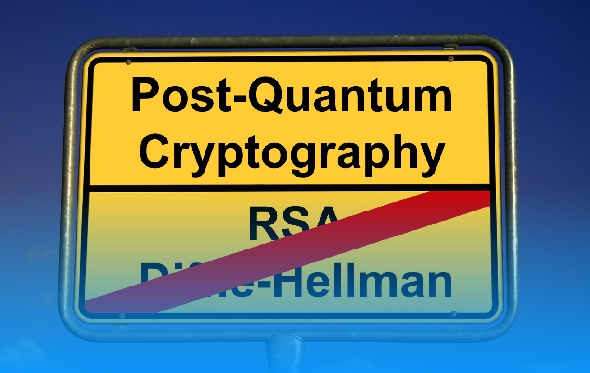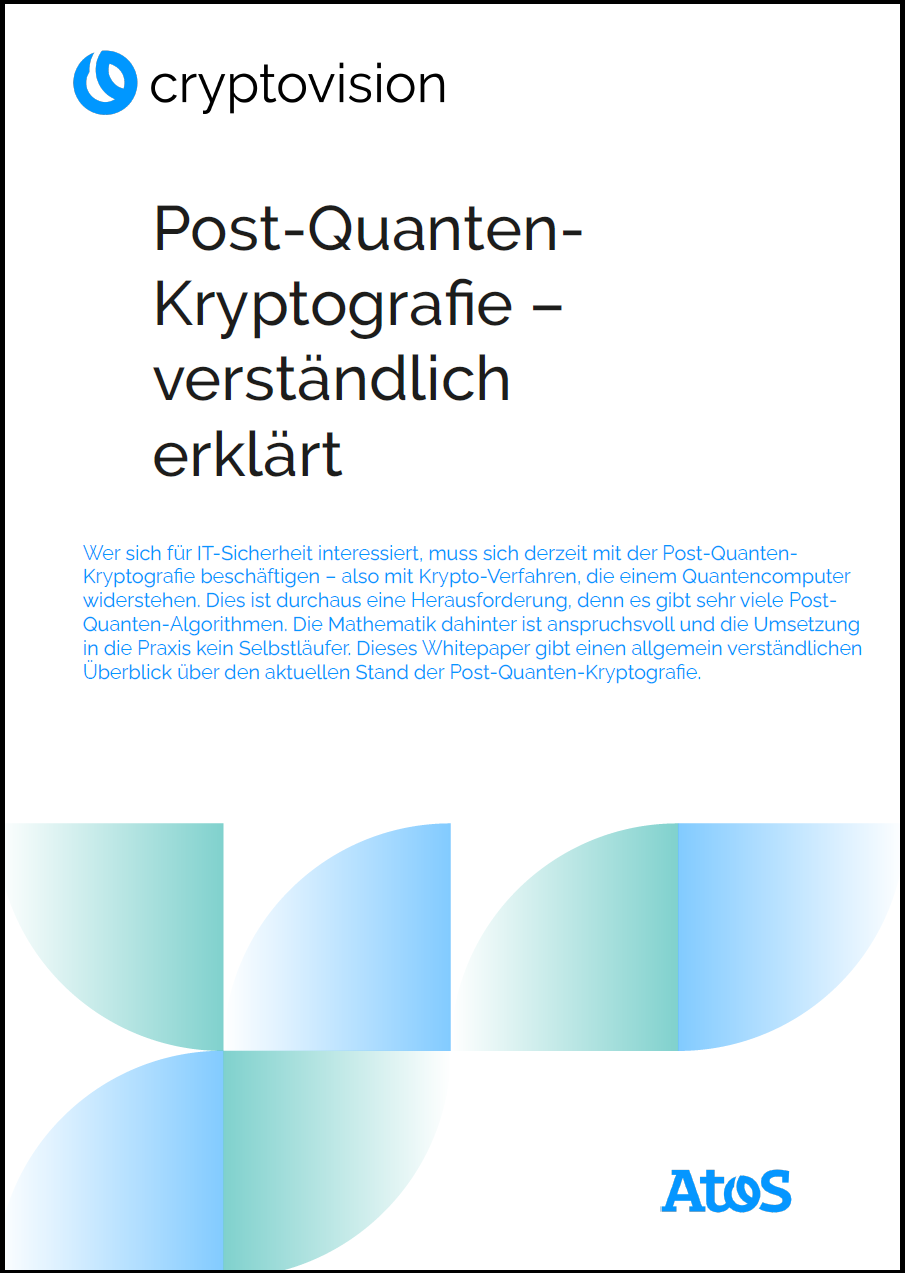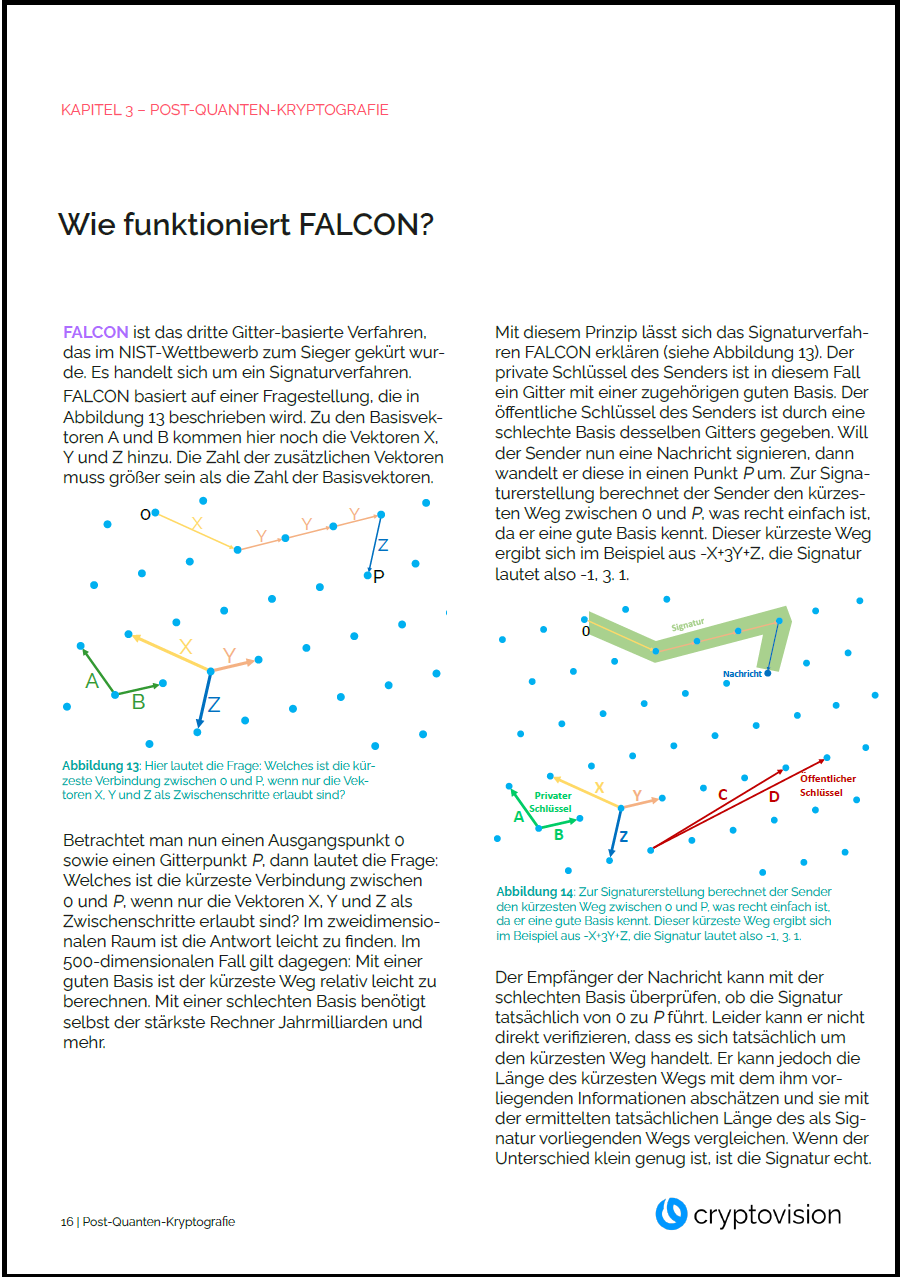Alles wichtige zum Thema Post-Quanten-Kryptogafie auf 25 Seiten – das gibt es in meinem kostenlos erhältlichen Whitepaper “Post-Quanten-Kryptografie – verständlich erklärt”.
Heute möchte ich zunächst einmal auf ein paar Veröffentlichungen meiner Blog-Leser hinweisen:
- Michael Hörenberg, Enigma-Experte und der bisher wohl aktivste Kryptos-Forscher in Deutschland, hat seine Bemühung bezüglich der letzten ungelösten Kryptos-Nachricht K4 leider eingestellt. Alle seine Materialien hat er auf seiner Webseite zur Verfügug gestellt. Vielleicht kann jemand darauf aufbauen und so das Rätsel endlich lösen.
- Thomas Ernst, der unter anderem die versteckten Botschaften in der “Steganographia” entdeckte und entzifferte, hat bereits 2021 einen Forschungsaufsatz zu seiner Lösung der verschlüsselten Briefe von Ferdinand III. veröffentlicht. Es freut mich sehr, dass mein Blog bei diesem Erfolg eine Rolle gespielt hat. Leider ist Ernsts Arbeit nicht online verfügbar.
- John Haas aus Österreich hatte einen Radioauftritt, in dem es um den Umgang mit Passwörtern ging.
- Meine Kollegen vom HistoCrypt-Programmkommittee haben den Call for Papers für die HistoCrypt 2023 in München veröffentlicht. Ich arbeite bereits an einer Einreichung. Ich bin sicher, dass auch einige Cipherbrain-Leser einen Vortrag beisteuern möchten.
Das Post-Quanten-Whitepaper
Ach ja, ich selbst habe auch etwas Neues veröffentlicht. Genauer gesagt war es mein Arbeitgeber Atos, in dessen Namen ich einen 25-seitigen Text (auf Neudeutsch wird so etwas als “Whitepaper” bezeichnet) zum Thema Post-Quanten-Kryptografie verfasst habe. Unter dem Titel “Post-Quanten-Kryptografie – verständlich erklärt” ist dieses Whitepaper auf der Webseite des Security Insider kostenlos erhältlich. Wer es herunterladen will, muss allerdings seine E-Mail-Adresse angeben. Natürlich würde ich mich (genauso wie mein Arbeitgeber) über eine hohe Zahl von Zugriffen freuen.
Wer es etwas kürzer haben will, findet beim Security Insider außerdem einen kürzlich erschienenen Artikel von mir zum gleichen Thema.
Was ich auf Cipherbrain noch nicht erwähnt habe: cryptovision, mein Arbeitgeber seit 2004, wurde letztes Jahr von Atos übernommen. Ich arbeite daher neuerdings nicht mehr für ein Unternehmen mit 70 Mitarbeitern, sondern für einen internationalen Konzern mit 110.000 Angestellten. In meinem Berufsleben hat sich daher einiges geändert, zum Glück bisher nicht unbedingt zum Negativen. Diese Woche habe ich übrigens in Paris verbracht, wo Atos seinen Hauptsitz hat.
Die Post-Quanten-Kryptografie spielt für Atos strategisch eine wichtige Rolle. Leider ist das Thema nicht ganz einfach: Die Verfahren sind vielfältig und mathematisch anspruchsvoll, die Standardisierung ist noch im Fluss. Wie die Migration zu den Post-Quanten-Verfahren ablaufen soll, ist in vielen Fällen noch ungeklärt. Informationen zur Post-Quanten-Kryptografie, die auch ohne ein abgeschlossenes Mathematik-Studium zu verstehen sind, sind rar. Das Thema ist daher wie gemacht für mich, schließlich lebe ich seit 25 Jahren zu einem großen Teil davon, kryptografische Sachverhalte möglichst verständlich zu erklären.
Das Whitepaper gibt es auf Deutsch und Englisch. Leider ist unter der oben genannten Adresse nur die deutsche Version erhältlich, während die englische bisher nicht verbreitet wird. Das soll sich ändern, allerdings mahlen die Mühlen in einem Großkonzern manchmal etwas langsamer. Wer das englische Whitepaper haben will, kann mir gerne eine Mail schicken.
Follow @KlausSchmeh
Further reading: A Rubik’s Cube puzzle relevant for post-quantum cryptography
Linkedin: https://www.linkedin.com/groups/13501820
Facebook: https://www.facebook.com/groups/763282653806483/





Kommentare (10)